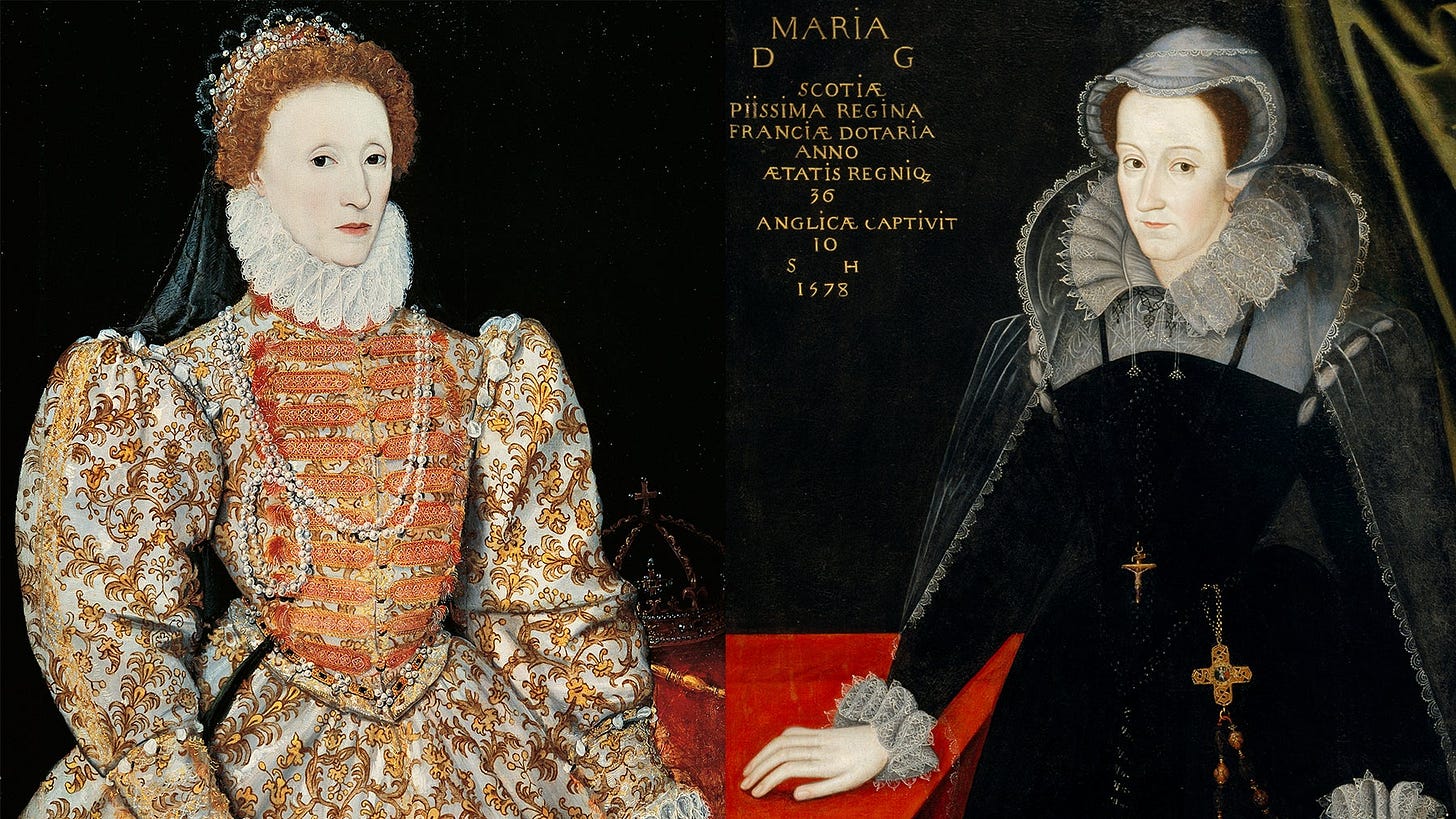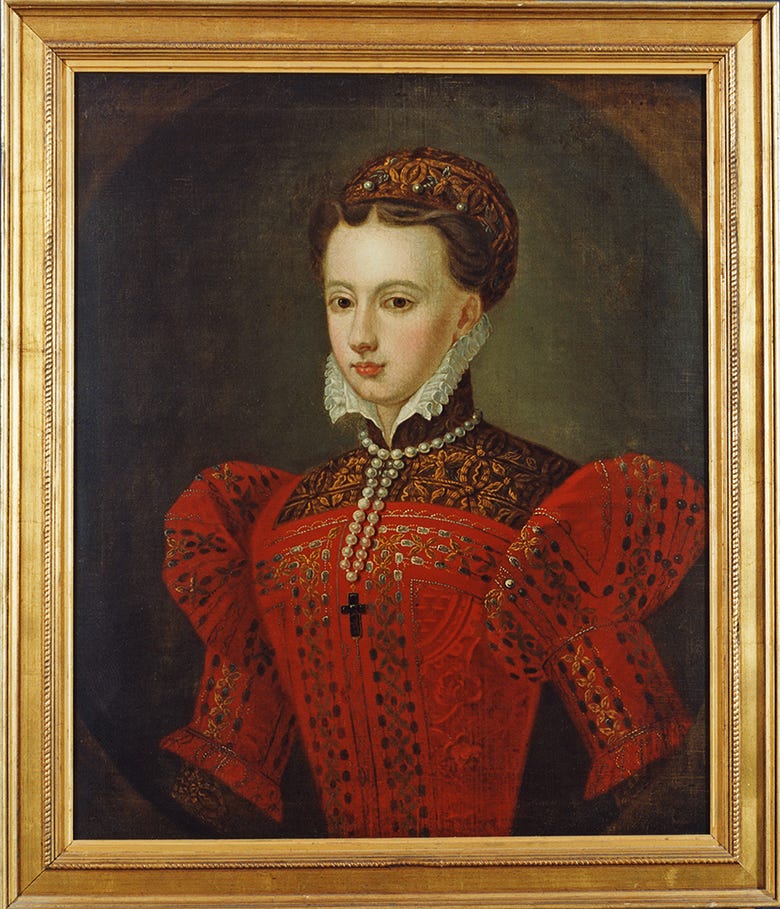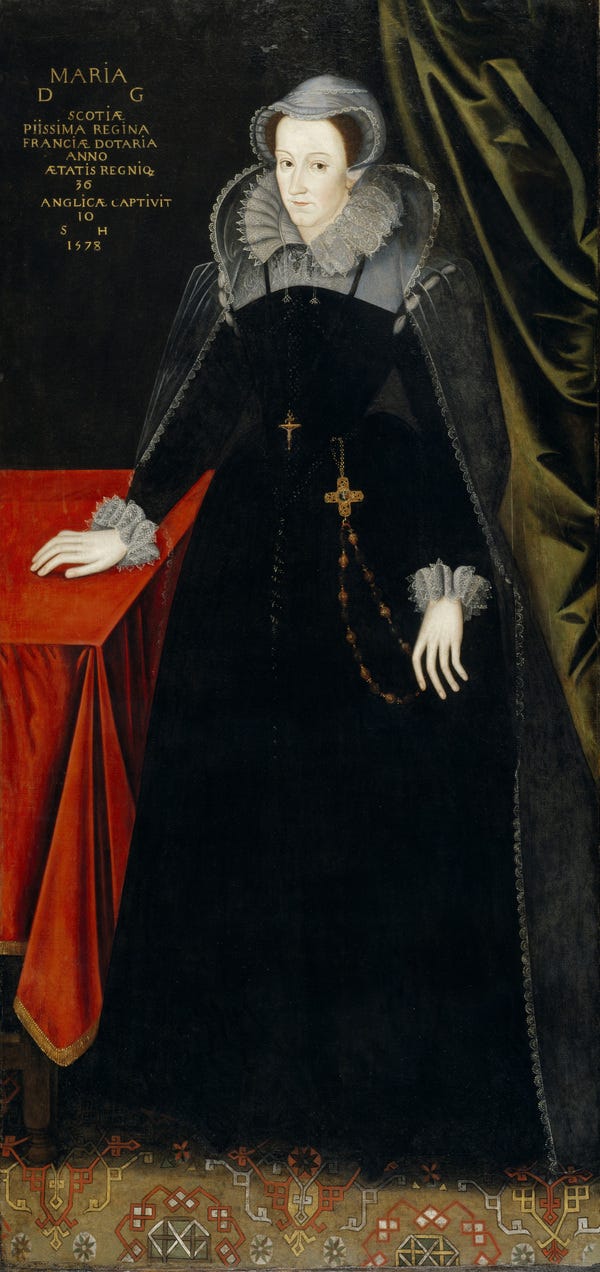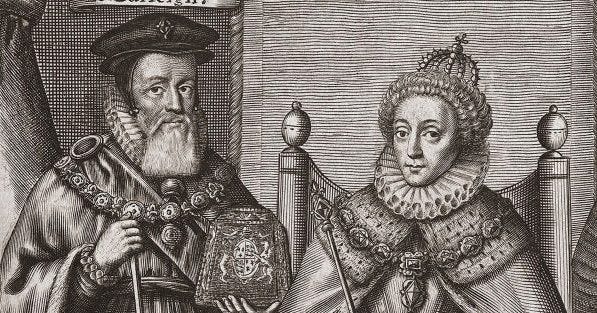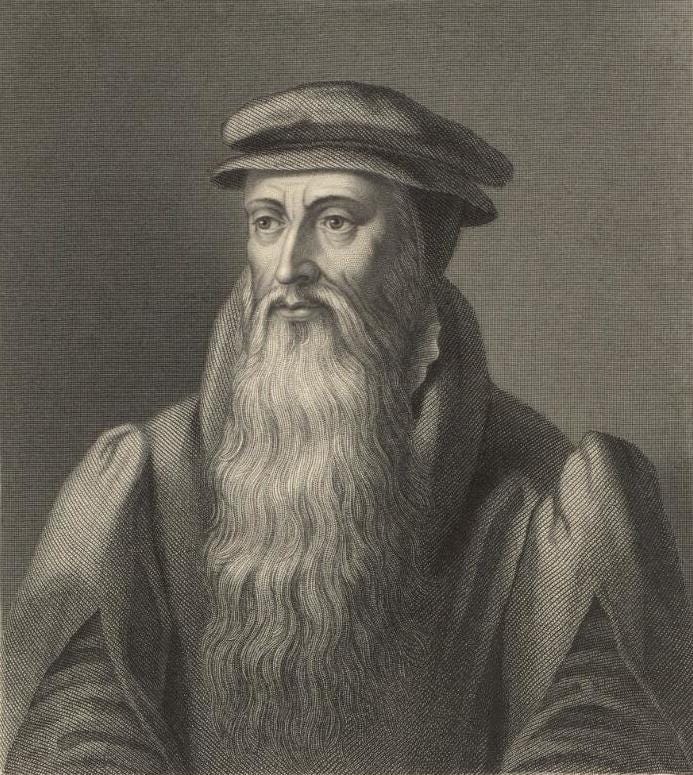This past week I visited one of my dream destinations - Scotland. The history there is so tangible, it’s literally everywhere. I personally am so enamored with the tragic tale of Mary Queen of Scots and the two sister queens of Mary and Queen Elizabeth I. Both royalty, but with two very different fates.
It’s a story of many what if’s that only expanded after visiting the home of Mary Queen of Scots at Holyrood House in Edinburgh.
So, today I’m going to tell the story of Mary Queen of Scots.
Mary had royal blood through and through. She had French royal blood through her mother Mary of Guise, Scottish royal blood through her father King James V of Scotland AND English royal blood on her paternal grandmother’s side as Margaret Tudor was the sister of Henry VIII
Mary’s entire life really kickstarted when her father died when she was just 6 days old. She subsequently became Mary Queen of Scots - the first and only female ruler of Scotland.
This prompted King Henry VIII to propose a marriage between his son, Edward VI, and Mary to unite England and Scotland - a way of bringing Scotland under English rule via marriage. This became known as the rough wooing as Mary’s mother was totally against this. So she sent her infant Mary to France for her safety. In return for keeping the young princess safe, France wanted Mary to marry the Dauphin - the future king of France. Mary does wed the Dauphin, but it’s a short lived marriage, literally, because her husband died not too long after.
Now Mary was a widow at 18 years old with all this royal blood and no potential to waste.
So Mary returns to Scotland at her half brother James’s suggestion. His plan was for Mary to be a sort of puppet queen while he actually ruled in her stead. But Mary was not remotely interested in that plan. She wanted to be a real monarch like her cousin Elizabeth I. Mary really had everything going for her to be a successful monarch, she had a robust royal bloodline, power and was said to have an incredible presence.
Mary was strikingly beautiful and tall. She was 5’11” - that is tall even for today, and even more so for back then. For that reason, she often could look the men in her court eye to eye. The men who were trying to influence her and grasping at her power. You’d think her height and beauty would make her intimidating to most men, but it did the opposite. It made them want to overpower her even more for their own gain.
The thing is, if Mary had agreed to be a puppet queen, she likely would have lived longer. But she was courageous and dared to rule on her own like all the men that came before her and she ultimately died for it.
Unfortunately, Mary had many enemies within Scotland and abroad that did not want to see her on any throne period.
Arguably Mary Queen of Scots two biggest enemies were her own court and William Cecil, Queen Elizabeth I’s chief advisor.
No one is more fearsome than a self made man, which Cecil was. He came from a relatively modest background, but used his intellect to rise through the ranks to ultimately within the royal family circles. Because of his law background, Elizabeth I sought him out for advice as a young woman while her brother was still King and this is when their storied alliance began. The two had a lot of key interests in common, most notably their firm belief in Protestantism.
Now, this was something I never fully understood until it was explained to me on my recent trip to Scotland..why the English royalty and aristocrats were so hellbent on ensuring a protestant monarch stayed on the throne instead of a Catholic one. I always believed it to be just a strong notion towards this new faith over an old one, but that couldn’t be further from the truth - at least for the upper class.
When most people think of the English Reformation they think of the creation of the Church of England, when in fact it was really one of the largest transfers of land in English history.
Henry VIII famously broke ties with the Catholic Church so he could divorce his first wife Catherine of Aragon and marry Anne Boleyn. This meant the pope no longer had religious authority in England AND, more importantly, all Catholic land and wealth now transferred over to the Church of England i.e. the Crown.
Before Henry VIII’s split, the Church of England owned approximately one third of all land in England making it the 2nd wealthiest entity aside from the Crown. This happened because people would often donate their land and wealth to the Church to secure their place in heaven.
This transfer of Catholic land to the Crown had a trickle down effect and in turn made many protestant aristocrats very wealthy. In fact, even part of Henry VIII’s dowry he paid to marry all his wives came from Catholic land.
Henry VIII used the land to fund wars, settle debts and bestow upon his noble subjects. Yet Henry himself was never a Protestant, his son, Edward VI was. But when Edward died, Mary I ascended the throne and swiftly repealed the Act of Supremacy and restored Catholicism in England. Her subsequent persecution of protestants is what earned her the moniker of “Bloody Mary”.
After Mary I’s death, England enjoyed relative peace under Queen Elizabeth I as a protestant queen who was religiously tolerant of Catholics. The aristocracy also continued to enjoy the wealth, land and titles granted to them through the dissolution of Catholic monasteries and other land.
So when Mary, Elizabeth’s first cousin, became a widow at 18 years old and returned to Scotland to rule as Mary Queen of Scots, the English aristocracy became wary of Mary, especially Cecil. He worried she may try to extend her rule to England because there were still people who’d argue that Mary was the legitimate heir to the English throne and not Elizabeth since Elizabeth was technically conceived illegally under Catholic law between Henry VIII and Anne Boleyn.
So that was one issue.
But, Mary had another problem. While she was away, Scotland also underwent a religious reformation with the vast majority of Scots now Protestant. John Knox, a notable protestant Scottish minister, who often shouted fire and brimstone from his pulpit already despised women in power, but a Catholic woman in power? Gods be good!
[Side note: John Knox was notorious for his scathing comments against women, particularly women leaders. It’s known that Queen Elizabeth despised the man. Probably from a witches' angle, he also despised magic. So, J.K. Rowling when she was writing Harry Potter, purposely made Dumbledore look like John Knox as a sort of “F U”.]
Keep reading with a 7-day free trial
Subscribe to Today I Learned Science to keep reading this post and get 7 days of free access to the full post archives.




